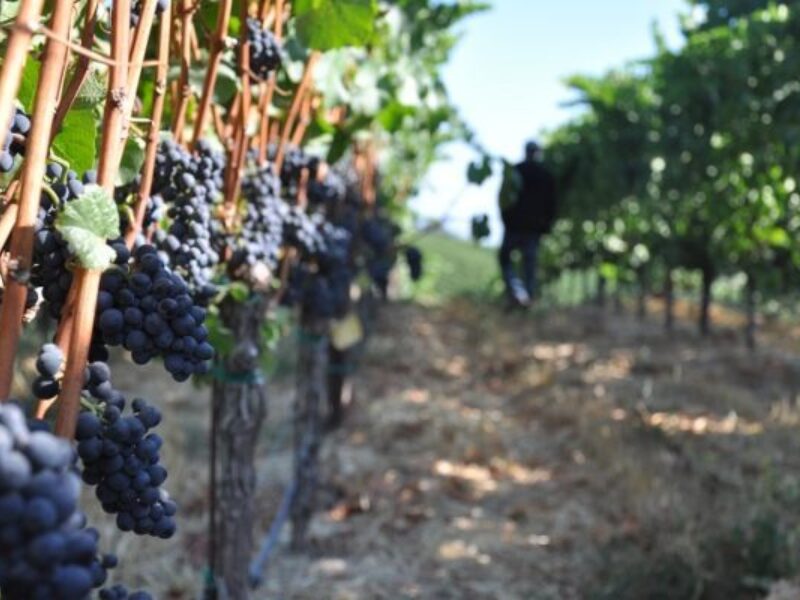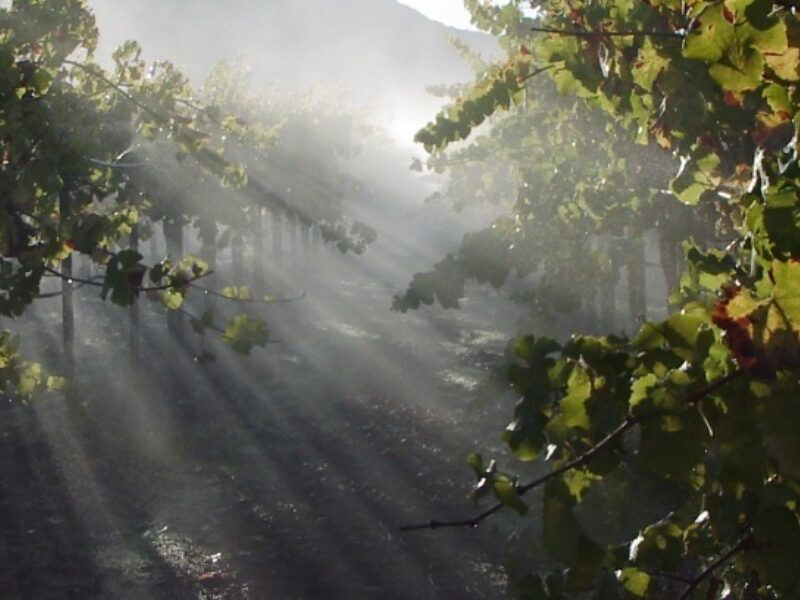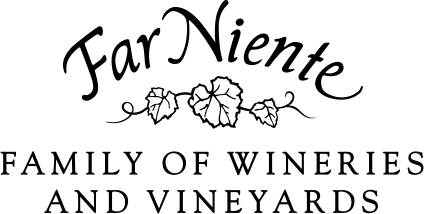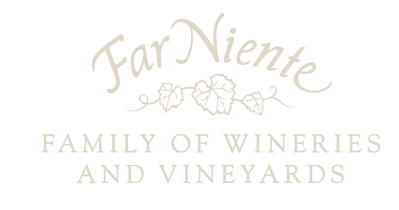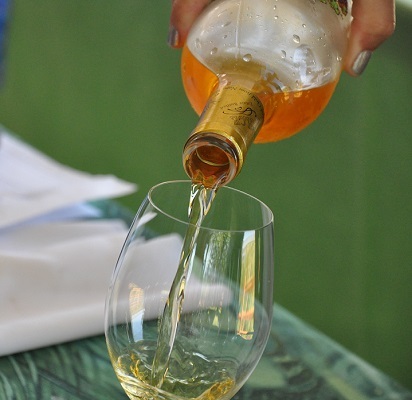
Our love affair with late harvest wine began in 1985, when Far Niente Director of Winemaker Dirk Hampson decided to make a late harvest wine purely for the enjoyment of himself and his partners, Far Niente Proprietor Gil Nickel and President Larry Maguire.
Inspired by the great late harvest wines of Sauternes, Dirk made just six barrels in that first vintage. And the wine was good! Good enough, that he decided to try his hand at nine barrels the next year. By 1989, Dirk and the Far Niente team had found the perfect vineyard: 20 acres of Semillon and Sauvignon Blanc planted at the base of the Vaca Mountains on the southern end of Napa Valley. Here, the climate was cool and the fog settled over the vineyard for longer periods of time, allowing noble rot to spread more fully across the vines.
That noble rot, or botrytis, was and is a critical component for making Dolce. Very specific elements have to come together each year for botrytis to occur, and if botrytis didn’t take hold, then the entire vintage would be ruined.
“I had to convince my partners that making Dolce was a good idea, especially since we run the risk of growing a whole vineyard full of fruit, and if no botrytis occurs, we have to write off the entire harvest. It’s a high-risk business plan,” Dirk said.
Not only was Dolce high-risk, but it was also expensive to grow and make. Dolce is produced by leaving ripe Semillon and Sauvignon Blanc grapes on the vine well after the neighboring vineyards have been picked and waiting for just the right weather conditions to occur to produce a mold called botrytis cinerea. This mold attacks the clusters, shriveling the grapes and beautifully concentrating the sugars, acidity and flavors,
During harvest, the grapes are picked not just cluster by cluster, but berry by berry, as sometimes only a single berry from a cluster will have been properly affected by the botrytis. The harvest typically lasts four-to-six weeks, with our winemaker often working through Thanksgiving and occasionally into December. The fragile berries are barrel fermented for up to three years in 100-percent French oak.
The 1989 vintage marked the first commercial release of Dolce, and the launch of Dolce as its own, independent winery. In some vintages, we’ve made as little as 300 cases, and in others, close to 3,000.
“It’s a risk when you only make a single botrytis dessert wine,” Dirk says, but when the risk can potentially reward you with one of the most beautifully perfumed, luxuriously textured dessert wines…well, like so many great, passionate love affairs, you find it’s a risk worth pursuing.
In 2001, Dirk handed the winemaking reins over to winemaker Greg Allen. Today, Greg shepherds each vintage from vineyard to bottle as he further cements Dolce’s status as the finest American late-harvest wine.
The 2012 Dolce spent 32 months in French oak, and the wine’s concentrated fruit flavors and long finish make it an ultra-romantic wine pairing for a variety of menus, both sweet and savory. To taste and discover the luxurious stone fruit flavors of our newest release, click here.

